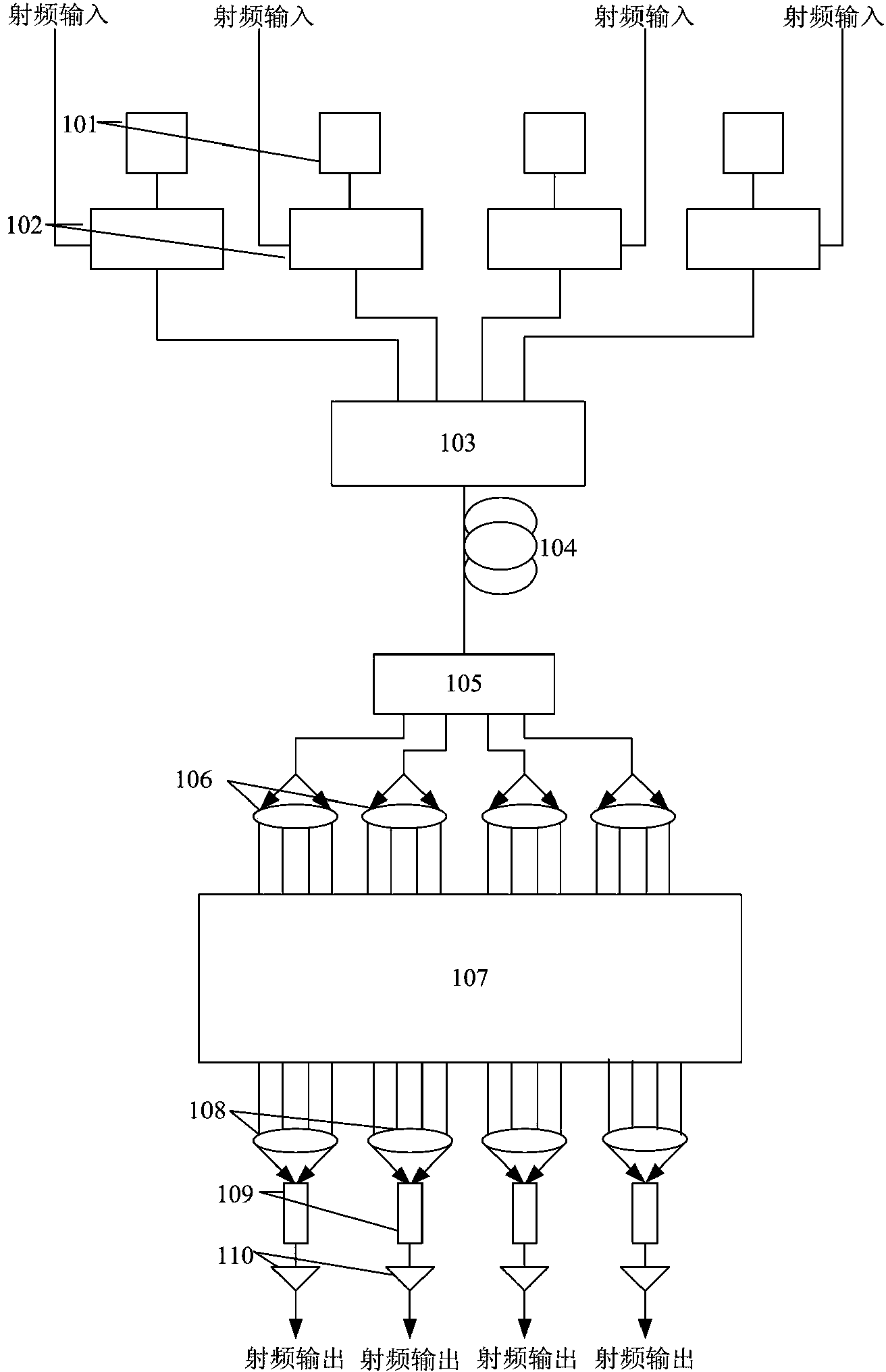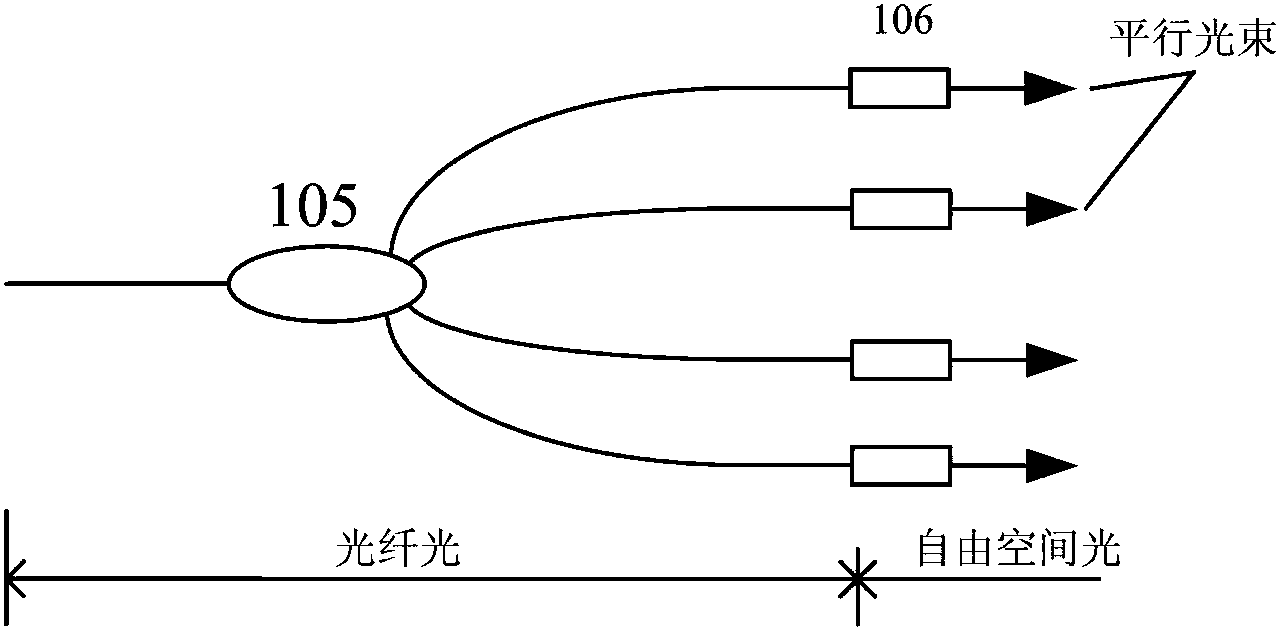Optically-controlled microwave beam forming networks
A microwave beam and former technology, used in optical fiber transmission, optical fiber radio, wavelength division multiplexing systems, etc., can solve the problems of difficult and effective fast control of beam scanning, slow beam scanning speed, and low delay accuracy. The effect of time error, high practical value, and high delay accuracy
- Summary
- Abstract
- Description
- Claims
- Application Information
AI Technical Summary
Problems solved by technology
Method used
Image
Examples
Embodiment Construction
[0020] see first figure 1 , figure 1 It is a block diagram of the structure of the optical beamformer device of the present invention. It can be seen from the figure that the optically controlled microwave beamformer of the present invention comprises 2 N Single-frequency DFB lasers 101, 2 with different wavelengths N An electro-optic intensity modulator 102, 2 N x1 passive wavelength division multiplexer 103, optical fiber 104, 1x2 N Optical beam splitter 105, 2 N A fiber collimator 106, a delay network module 107, 2 N A coupling lens 108, 2 N photodetectors 109 and 2 N A low-noise amplifier 110, wherein n is a positive integer more than 2, and the positional relationship of the above-mentioned components is as follows:
[0021] 2 N The output ends of the single-frequency laser 101 with different wavelengths are respectively connected with 2 N The optical signal input terminals of two electro-optical intensity modulators 102 are connected, and the RF signals capture...
PUM
 Login to View More
Login to View More Abstract
Description
Claims
Application Information
 Login to View More
Login to View More - R&D
- Intellectual Property
- Life Sciences
- Materials
- Tech Scout
- Unparalleled Data Quality
- Higher Quality Content
- 60% Fewer Hallucinations
Browse by: Latest US Patents, China's latest patents, Technical Efficacy Thesaurus, Application Domain, Technology Topic, Popular Technical Reports.
© 2025 PatSnap. All rights reserved.Legal|Privacy policy|Modern Slavery Act Transparency Statement|Sitemap|About US| Contact US: help@patsnap.com



